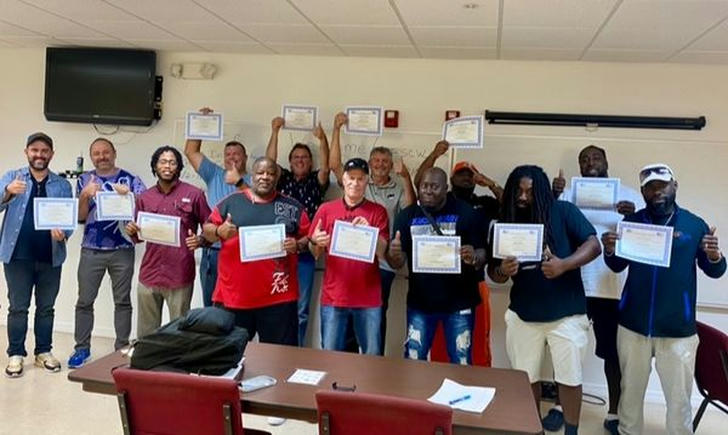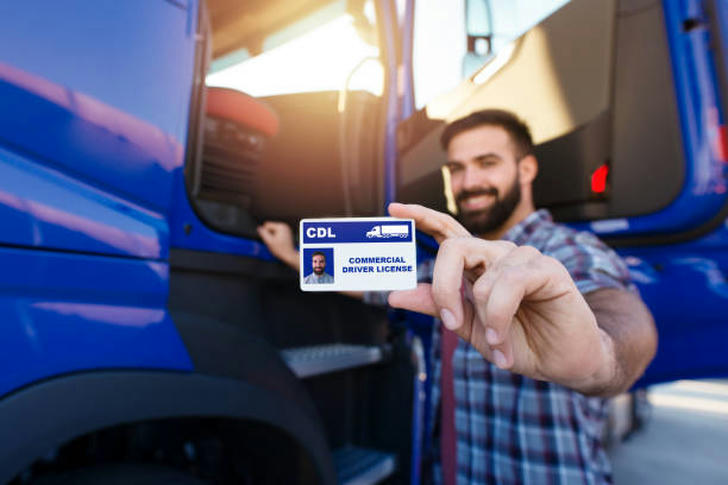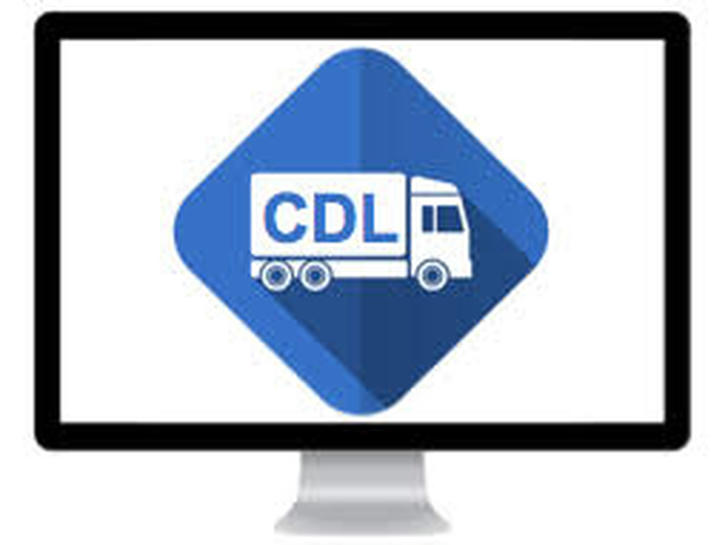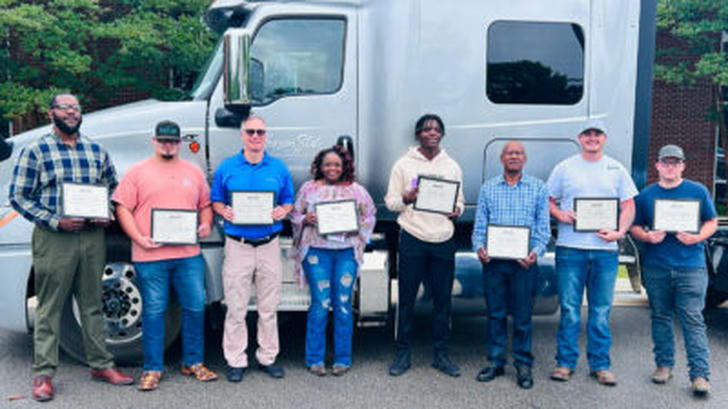Start Your Trucking Career Today: Free CDL Training Included
Looking to jumpstart a rewarding career in trucking? Getting a Commercial Driver's License (CDL) is the first step, and with free training options available, it's easier than ever to get started.
In this article, we'll guide you through everything you need to know—from understanding CDL requirements to finding free training programs—helping you pave the way to a stable, well-paying career in the trucking industry.

What is CDL
A CDL, or Commercial Driver's License, is a specialized license required to operate large, heavy, or hazardous materials-carrying vehicles in the United States.
For anyone pursuing a career in trucking, obtaining a CDL is essential. It ensures that drivers have the skills and knowledge necessary to operate commercial trucks safely and responsibly.
With a CDL, a wide range of career opportunities in trucking becomes available. Many positions—ranging from long-haul trucking to local deliveries—require a CDL. It's also necessary for driving larger vehicles such as semi-trucks, buses, and tankers, making it a foundational step in building a successful career in the industry.
Three Types of CDLs
There are three types of CDLs—Class A, Class B, and Class C—each allowing drivers to operate specific types of commercial vehicles. Here's a breakdown of each class and what it qualifies a driver to operate:

What to Expect During CDL Training
1. Classroom Instruction
Duration: Typically 40-80 hours.
Content: Classroom training covers the essential knowledge needed to pass the CDL written exam and safely operate commercial vehicles.
Topics Include:
• Federal and state commercial driving regulations
• Vehicle inspection procedures (pre-trip inspections)
• Safe driving techniques (turning, braking, and defensive driving)
• Basic mechanics of large trucks (brake systems, transmission types)
• Logbook and Hours of Service (HOS) regulations
2.Hands-On Driving Training
Duration: Usually 30-40 hours of driving practice.
Basic Maneuvers:
• Steering control and navigating turns
• Shifting gears (manual or automatic)
• Braking techniques (including air brake practice)
• Backing up (straight-line and offset backing)
Advanced Skills:
• Docking and parking in tight spaces
• Lane changes and highway merging
• Driving in varied conditions (rain, snow)
• Handling inclines safely
3. Pre-Trip Inspection Training
Purpose: To teach students how to perform a comprehensive pre-trip inspection, crucial for both the CDL road test and driver safety.
Focus Areas: Inspecting brakes, tires, lights, coupling devices, and engine components.

4. On-the-Road Driving Test Prep
Skills Test: The CDL skills test consists of three main parts:
• Pre-trip inspection
• Basic control skills (e.g., backing exercises)
• Road test to assess real-world driving capability
★ Assessment: Instructors provide feedback to ensure readiness for the official CDL exam.
5.Endorsement Training
Additional endorsements, like HazMat, double/triple trailers, or passenger vehicles, may be required for certain trucking jobs. These classes cover specialized regulations and additional hands-on training for specific cargo or vehicle types.
6.Career Support and Job Placement Assistance
Many CDL schools offer job placement services to connect graduates with employers. Some provide networking opportunities, mock interviews, and partnerships with trucking companies actively seeking drivers.
7.Graduation and Exam Scheduling
Upon completing your training, schools often assist in scheduling the CDL skills test with the DMV. Graduation certificates are provided, which can be valuable when applying for jobs.

Price of CDL Training Course
1.Average Cost by Program Type
Private CDL Schools: $3,000 to $8,000 for full training programs. These often offer in-depth training and job placement assistance.
Community Colleges: $1,500 to $3,000. More affordable, but availability may vary by state.
Online CDL Courses: Free to $500 for online theory courses (hands-on training still required for licensing).
2.Additional Costs
Permit Fees: $50 to $100 for a Commercial Learner's Permit (CLP).
CDL Test Fees: $50 to $200, depending on the state.
Endorsement Fees: $10 to $100, depending on the endorsement type.
Drug Testing & Medical Exam: $50 to $150 for medical fitness.
Study Materials: $10 to $100, though many practice tests are available for free.

Free or Low-cost CDL Training Option
1. Company-Sponsored CDL Training Programs
Many trucking companies offer free CDL training programs. In exchange, you typically agree to work for the company for a set period, usually one to two years. If you leave early, you may need to repay some or all of the training costs.
Popular Companies Offering Free CDL Training: Companies like Swift, Schneider, CRST, and Prime Inc. offer sponsored training programs with a job commitment.
Benefits: No upfront cost, hands-on training, and often a guaranteed job after training.
Drawbacks: Requires a contract commitment; early termination may incur penalties or repayment obligations.
2. State and Local Workforce Development Programs
Many states provide funding for career training, including CDL training, through workforce development programs. These programs are designed to help people enter in-demand fields like trucking.
Where to Apply: Check with your state's Department of Labor or local Workforce Development Office for eligible programs.
Benefits: May cover partial or full cost, with no employment contract.
Drawbacks: Limited availability; may have income or eligibility requirements.
3. Community Colleges and Technical Schools
Some community colleges and technical schools offer CDL programs at lower costs. Certain institutions may also accept federal financial aid, making these programs even more affordable.
Financial Aid Options: Some programs qualify for Pell Grants or scholarships, reducing the cost further.
Benefits: Typically more affordable than private schools; financial aid may apply.
Drawbacks: Limited availability, and program length may vary.
4. Veterans' Benefits and the GI Bill
If you're a military veteran, the GI Bill may cover the cost of CDL training. Many CDL schools accept VA benefits to help veterans start a trucking career.
Where to Apply: Look for CDL programs that are approved for VA benefits. Many private trucking schools and community colleges qualify.
Benefits: Full or partial coverage without needing a company commitment.
Drawbacks: Limited to veterans; may have additional eligibility requirements.
5. Federal and State Grants or Scholarships
Grants like the Workforce Innovation and Opportunity Act (WIOA) provide funding for career training programs, including CDL training. Some states also have scholarships specifically for individuals entering in-demand fields.
Where to Apply: State Department of Labor websites, career centers, or CDL schools themselves, which may have information on available grants.
Benefits: Reduces or eliminates the cost; no job commitment required.
Drawbacks: Competitive and may have strict eligibility requirements.
6. Free Online CDL Theory Training
While online training won't replace hands-on experience, there are free resources to help you pass the written CDL permit test. Many sites offer free CDL practice exams, study guides, and video tutorials.
Where to Find Resources: Websites like CDL Career Now, Trucker Country, and state DMV websites offer free practice tests and study materials.
Benefits: Prepares you for the permit test at no cost.
Drawbacks: Only covers the written test; you'll still need practical training.
7. Crowdfunding or Community Support
If traditional funding sources aren't available, you could try crowdfunding to raise funds for CDL training. Sharing your story and career goals may encourage friends, family, and community members to contribute.
Where to Start: Platforms like GoFundMe and social media can be used to share your campaign.
Benefits: Flexible funding for those who need financial help.
Drawbacks: No guarantee of reaching your funding goal.

Career Opportunities After Obtaining Your CDL
1. Long-Haul Truck Driver
Long-haul truck drivers transport goods across the country, often driving for extended periods. This role offers the chance to travel, with competitive pay and potential for overtime. Many companies also offer benefits like health insurance, retirement plans, and paid time off.
2. Local Delivery Driver
If you prefer staying closer to home, local delivery driving may be ideal. Local drivers typically operate within a specific geographic area, delivering goods to businesses and consumers. The job offers regular hours and less time on the road.
3. Hazardous Materials (HazMat) Driver
With the proper endorsement, you can drive vehicles that carry hazardous materials, such as chemicals or flammable liquids. This highly specialized job requires additional training and offers higher pay due to the risk involved.
4. Truck Dispatcher
While not a driving position, becoming a truck dispatcher allows you to use your CDL knowledge while coordinating and managing truck drivers. This role is crucial for ensuring that drivers meet deadlines, stay compliant, and navigate routes efficiently.
5. Dump Truck Driver
Dump truck drivers operate heavy-duty trucks to transport construction materials, debris, or other bulk materials. These drivers are often employed by construction companies, municipalities, or contractors, offering both local and regional job opportunities.
6. Tanker Truck Driver
Tanker truck drivers transport liquids such as fuel, milk, chemicals, or water. This role requires additional endorsements but offers a high salary and opportunities for specialized training and certifications.
7. Refrigerated Freight Driver
Refrigerated freight drivers transport temperature-sensitive goods like perishable food items or medical supplies. This job often involves working for large distribution companies and offers competitive pay.
8. Bus Driver
With a CDL, you can also become a bus driver, operating school buses, charter buses, or transit buses. This career path typically requires a different endorsement, but it offers stable hours and the opportunity to interact with passengers daily.
9. Owner-Operator
If you're entrepreneurial, you can pursue a career as an owner-operator, where you own and operate your own trucking business. This provides flexibility and the potential for high earnings but comes with responsibilities like truck maintenance and insurance costs.
10. Flatbed Truck Driver
Flatbed truck drivers transport oversized or non-standard cargo, including construction materials and large machinery. The job requires special skills in loading and unloading cargo safely, but it's often well-compensated and offers variety.
11. Livestock Transporter
Livestock transporters specialize in transporting animals such as cattle, pigs, or horses. This career requires patience and care but offers steady work, especially in rural areas with agricultural industries.
12. Construction Equipment Transporter
CDL holders with specialized training can transport construction equipment to job sites. This often involves working with large machinery like bulldozers, cranes, and excavators.

Conclusion
Starting a career in trucking is now more accessible than ever, thanks to a variety of free and low-cost CDL training options. With the right training and dedication, you'll be ready to embark on a rewarding career in the trucking industry. Take the first step today and secure your future on the road!
